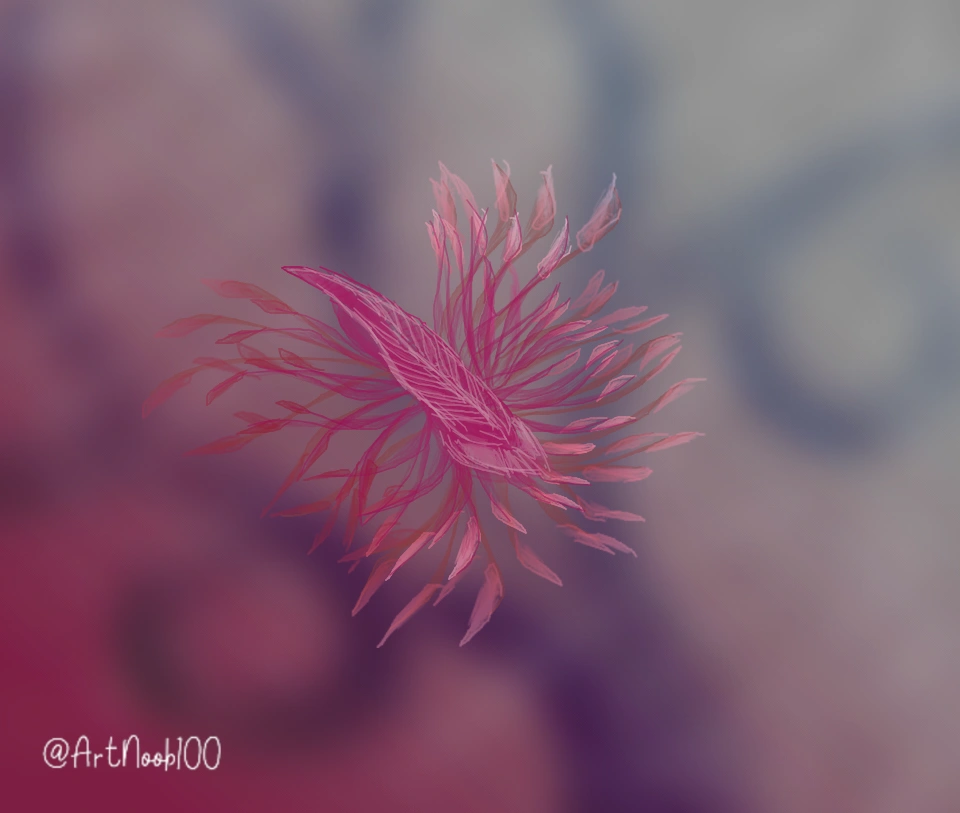
Arbozoa is a phylum of sessile, photosynthetic organisms unique to Garmiwala, serving as the planet’s tree-analogs. However, what sets the Arbozoa apart from plants is its animalistic larval stage.
In its adult form, the Garmiwala resembles a terrestrial tree: a rooted structure with branching photosynthetic fronds, bark-like layers, and deep anchoring roots. Unlike plants, however, it does not produce simple seeds. Instead, it releases a mobile larval stage that performs the dual role of dispersal and ecological agent, occupying niches similar to those of Earth’s insects and birds.
The larval stage has no true legs or wings. Instead, its body is ringed with flexible, feather-like bristles that can be expanded or contracted. When extended, these bristles form a parachute-like disc, allowing the larva to drift on air currents in much the same way as a dandelion seed, but with far greater control.
To alter direction, the larva ripples its bristle field asymmetrically, creating drag on one side and lift on the other. Small contractions can collapse one half of the disc, allowing it to make rapid gliding turns.
Some species are even known to additionally possess internal gas sacs, which make them nearly weightless and responsive to even weak breezes.
As larvae, the Arbozoans are active foragers and opportunists. Given the scarcity of stable food sources on Garmiwala’s harsh surface, they will opportunistically feed on any organic material they can find. Some have specialized to feed on the blood of larger native megafauna, such as the massive salt striders. Others might prey on smaller Arbozoa to both reduce potential competition and fuel their own growth.
When conditions are right, the larva descends and attempts to attach itself to a new substrate. Specialized anchoring bristles on its underside are tipped with barbs and coated in adhesive secretions. Once in contact with soil, bark, or even rocky surfaces, these hooks hold the body in place while a rooting pad grows downward. Over several days, the larva fuses with the substrate, its mobile tissues breaking down as the sessile adult form takes shape.
In evolutionary terms, the larval dispersal strategy is remarkably efficient, ensuring wide colonization and survival on a sunbaked planet known for its extreme droughts.
This entry was made by Artnoob100.